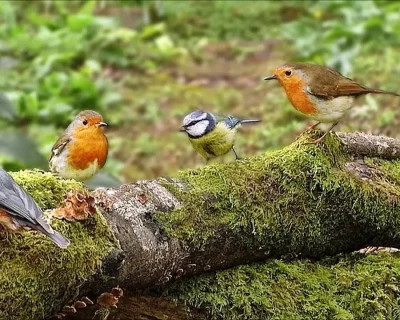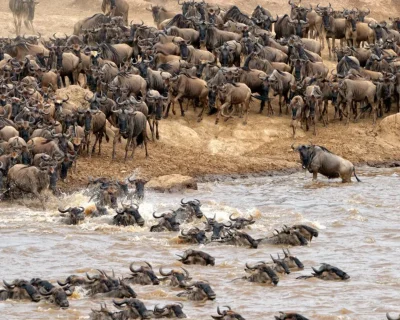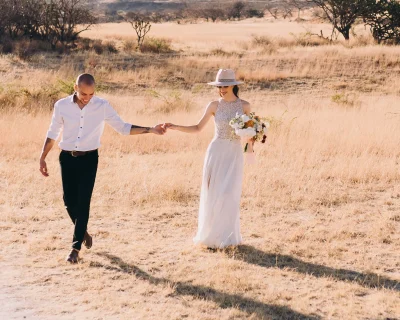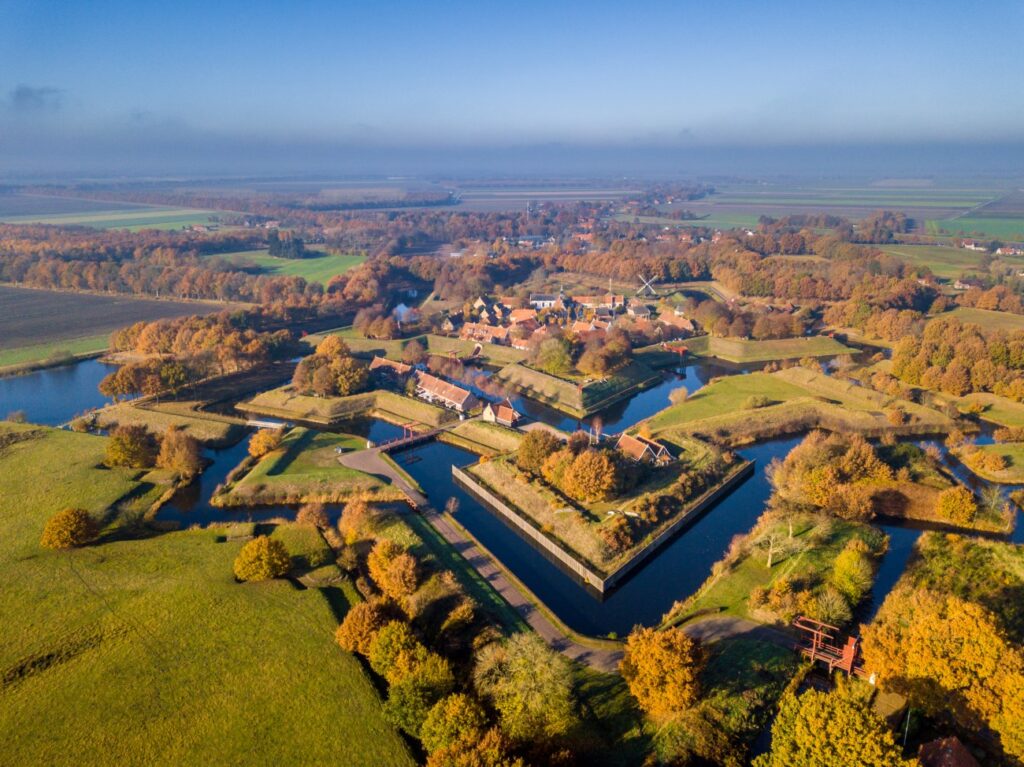The annual Great Migration occurs is an all-round thrilling experience and has been rightly dubbed ”the world cup of wildlife.” It is not just because the event sees millions of wildebeests, gazelles, and zebras moving en masse from Serengeti, Tanzania to the lush plains of Kenya’s Masai Mara and then back to the Serengeti again in one constant yearly cycle. It’s also not just because of the dramatic river crossings where the lumbering herds have to cross treacherous waters while dodging large Nile crocodiles lying in wait. It’s the fact that the Great Migration perfectly captures the idea of the circle of life. Predators take down some of the herds, while the Mara River claims some stragglers, but the ranks are replenished during the calving season.
The Calving Season of the Great Migration
This truly epic moment is when the herds south of the Serengeti give birth to their young ones. Prior to that calving season which usually falls between January and March, there are fresher grazing for the wildebeest. This fresh grazing is necessary to give them the energy needed to procreate. The fresh grazing comes after the November rain. It’s always an amazing scene due to the number of wildlife activities during the calving season. Some 8,000 wildebeest are born on a daily basis. Thousands of zebras and Thomsons gazelle’s take advantage of this period to drop their young ones as well.
With the calving season comes a series of activities in the wild. For instance, the newborns are faced with the challenge of having to contend with predators such as lions, leopards, and cheetahs. Not to worry though, the newborn calves develop really fast. Within minutes of being born, they are already standing and after just about three days, they are usually strong enough to run with the rest of the herds.
Planning Your Calving Season at the Serengeti
To get the most of the calving season, here are a few tips to consider:
Book In Advance
The calving season in the Serengeti is a world-famous phenomenon so it gets booked pretty fast. The relevant months are January to March, so consider booking at least eight months to one year in advance to secure a good spot. You might also get some discounts for booking early.
Accommodation Options
One key aspect of planning your calving season is to ensure you secure a great accommodation option for great viewing. There are many state of the art accommodation options you can choose from, but obviously you’ll want to go for a mobile camp so you can follow the herds across the plains and enjoy an excellent viewing experience. One good option is the Acacia Migration Camp, which offers top-of-the-line tented rooms, complete with amazing amenities like a restaurant, bar, lounge, and WIFI services. Located in the Kogatende area, the camp is a semi-permanent mobile tented camp. With its luxury accommodations in the wild, the camp offers splendid views of the Great Migration. The camp also features ten canvas tents with flush toilets, ensuite bathrooms, and other amenities. There is a separate tented camp strictly used as the dining area next to the lounge and bar area.
Be Health Conscious
Before you embark on your safari ensure firstly that you consult your doctor and take all the necessary health precautions. Ensure you do this three months before your trip to get the following immunization recommended for American or European travelers such as hepatitis A, polio, rabies, tetanus, typhoid, yellow fever. Note that in Tanzania, tourists are not required to have any immunization except yellow fever.
Have a Realistic Budget
Embarking on a trip to the Serengeti during the calving season can be pretty expensive. Make sure you have a realistic budget before you go to Tanzania. And even if you are going to be on a budget find ways to help you cost on your Tanzanian trip during peak season.
What to Pack
Obviously, you already know to bring along your binoculars and a good camera, but keep in mind that this season may still see some rains, so be sure to pack some layers. You’ll usually enjoy your wildlife viewing during the calving season from the vantage of an open-sided 4X4 vehicle, so pack comfy casual clothing and shoes.
Conclusion
Visiting the Serengeti during the calving season is an incredible experience. Not only do you get to witness the spectacle of thousands of live births, but you also get to experience the wild and all its marvelous natural wonders. Hopefully, these tips will help you to figure out how to plan for your safari during the calving season. If you need more information or want to go ahead and book your safari adventure, do get in touch with us. We’ll be happy to help you decide on the best tour option.





